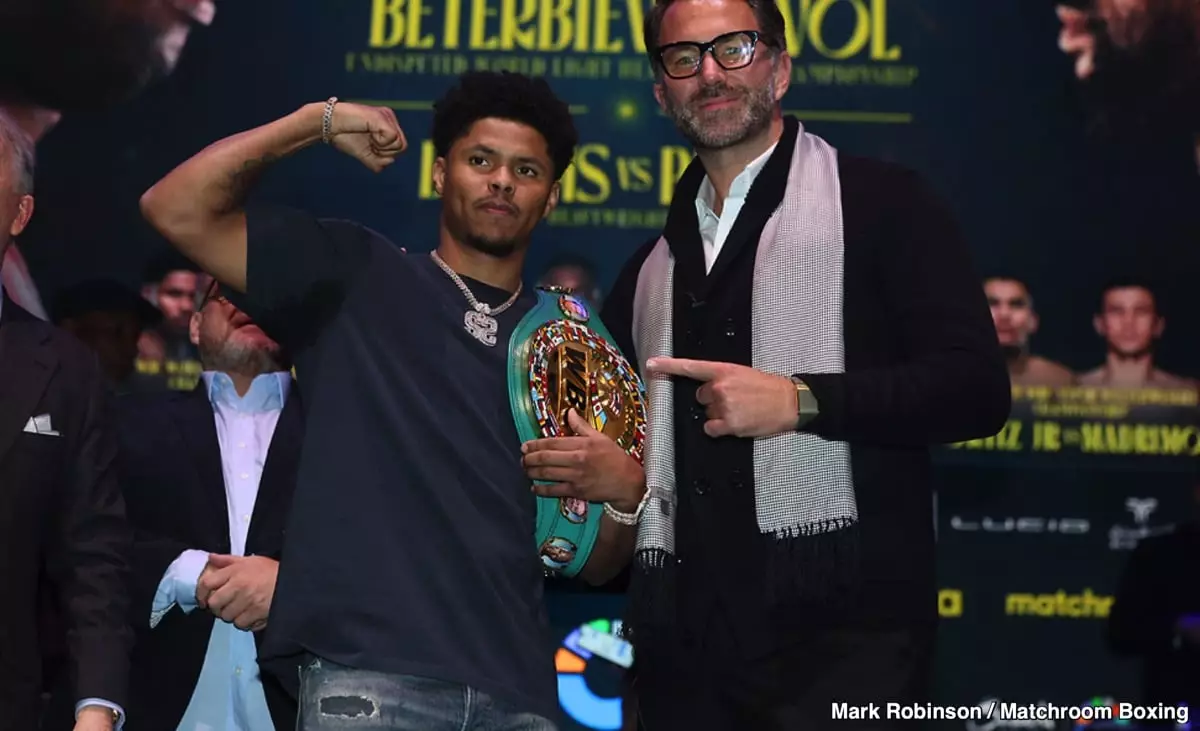The world of boxing is often a battleground not only between fighters but also between fans and their expectations. Styles have always been a crucial factor in determining the excitement of a match and, consequently, its commercial viability. Renowned fighter Mikey Garcia has recently expressed his sentiments regarding the contrasting styles of Shakur Stevenson and Gervonta “Tank” Davis. Garcia’s observations bring to light important questions about how fighter personas, strategies, and public opinion intersect in modern boxing.
Garcia’s Critique of Stevenson’s Approach
Mikey Garcia has publicly stated that he isn’t a fan of Stevenson’s fighting style, preferring more aggressive approaches that engage the audience. Stevenson, who boasts an impressive record of 22 wins with only 10 by knockout, is celebrated for his technical skills, quick reflexes, and boxing intelligence. However, Garcia criticizes Stevenson for being overly committed to his strategic style, which he believes may not resonate well with fans. This poses a critical issue in boxing: can a fighter’s exceptional technical skills overshadow a style that fans may perceive as defensive or less entertaining?
Garcia appreciates Stevenson’s talent and acknowledges his ability as a “super talented” boxer. Still, he remains skeptical about a potential bout between Stevenson and Tank Davis. To Garcia, such a matchup appears destined to be “dull,” highlighting what he perceives as a growing disconnection between fan expectations and fighters’ strategic choices.
In today’s boxing landscape, where fights are heavily marketed, public perception plays an undeniable role in a fighter’s marketability. Stevenson, while being a master tactician in the ring, may find his difficulties gaining public interest compared to more explosive fighters like Davis. This situation brings about a paradox: a fighter can possess outstanding skills yet still struggle to attract fans’ enthusiasm.
Garcia also points out that Stevenson seems unfazed by public criticism, stating that the fighter is driven by winning rather than entertainment. This self-determined approach, while admirable, may ultimately limit Stevenson’s potential to become a mainstream sensation in boxing. Moreover, it raises the question of whether styles that prioritize victory at the expense of crowd-pleasing antics can sustain long-term success in a sport that thrives on fan engagement.
According to Garcia, the biggest sellable matchup for Gervonta Davis lies with more aggressive fighters, specifically naming Vasily Lomachenko as a more attractive opponent than Stevenson. Unlike Stevenson, Lomachenko combines technical skill with an engaging fighting style, anticipating an audience that demands excitement. This disparity in promotional potential highlights how styles and fan engagement are intertwined.
The odds of a fight like Tank Davis vs. Stevenson being financially viable hinge on the willingness of promoters, such as Turki Al-Sheikh, to support matchups that may not excite fans. If significant financial incentives emerge, the fight could be arranged. However, if Garcia is correct that such a match-up would lack excitement, the willingness from fans to purchase pay-per-view events could dwindle, leading promoters to rethink the merits of promoting such a fight.
The boxing landscape is evolving, influenced both by emerging talents like Shakur Stevenson and established stars like Gervonta Davis. As fighters balance their individual styles with public reception, the sport grapples with the challenge of adapting to audience preferences while honoring strategic mastery. Mikey Garcia’s candid critique of Stevenson’s style sparks essential conversations about the essence of boxing and what it takes to captivate fans.
As the sport moves forward, it’s critical for fighters, promoters, and fans to consider how the battle of styles ultimately shapes the future of boxing. While Stevenson’s technical prowess is undeniable, a successful career may require him to find ways to adapt his style to minimize the disinterest it sometimes elicits from fans. Ultimately, the dynamics of style versus entertainment remain at the heart of meaningful discussions in boxing today.

